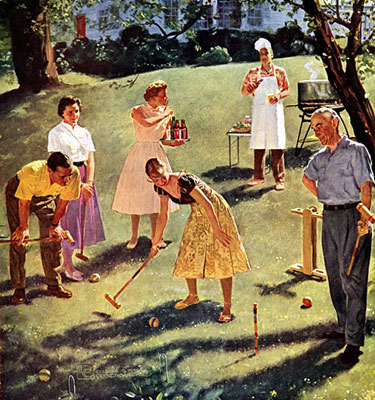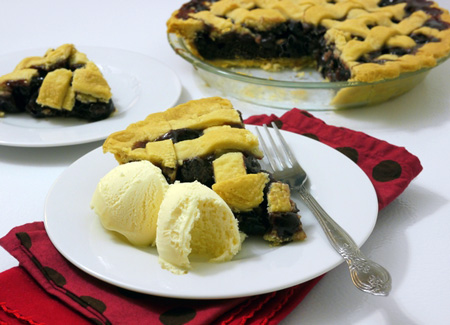 Cherries are especially prolific in the Pacific Northwest. Just about every variety you can think of are currently available at the markets and farm stands. They are hard to pass up since they are so juicy and sweet.
Cherries are especially prolific in the Pacific Northwest. Just about every variety you can think of are currently available at the markets and farm stands. They are hard to pass up since they are so juicy and sweet.
I have such great childhood memories of the cherry picking adventures I experienced with my family in Beaumont, California. My brother and I would climb up in the trees on these really high-rickety ladders. We would pick and eat cherries until the juice was dripping down our chins, hands and necks. It was always really hot, which means we were very sticky, sweaty and extremely dirty by the end of the day. You can picture it right? And for some reason we were always wearing white, something I still don't understand.
Anyway, I had a load of fresh, sweet cherries last week and I couldn't let summer go by without making a fresh cherry pie. However, I wanted to spice it up. If you have never experienced a "spiced cherry" anything...it's time.
Food, Family and Memory
Food, Family, and Memory
Cooking Memories
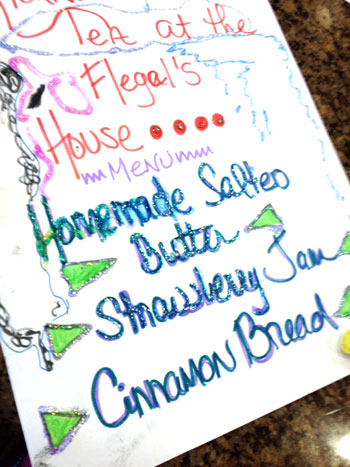 Last week, I had the extreme pleasure of cooking with my Great-est niece and nephew, Lauren and Max. The question of what to make was easy, it had to be simple and memorable. My goal was for them to remember what we created together forever like my memories of cooking with my mother. Forever means to me that they will think of our afternoon when they eat any of the three things we made: butter, strawberry jam and cinnamon bread. Everyday food, so basic but rarely handmade anymore and if you want to interest kids in cooking you need to show them ‘food magic.’
Last week, I had the extreme pleasure of cooking with my Great-est niece and nephew, Lauren and Max. The question of what to make was easy, it had to be simple and memorable. My goal was for them to remember what we created together forever like my memories of cooking with my mother. Forever means to me that they will think of our afternoon when they eat any of the three things we made: butter, strawberry jam and cinnamon bread. Everyday food, so basic but rarely handmade anymore and if you want to interest kids in cooking you need to show them ‘food magic.’
We first started with activating or blooming the yeast- Not so interesting to them at first until I explained that yeast is a plant and like all plants it blooms in it’s own way. I didn’t have their attention yet, but I knew I would shortly. The yeast started to bubble and swell minutes after it came in contact with the sweetened warm water. They were watching-ish. I explained the process of bread making and my basic formula. How was I to explain gluten development to a 3 year old and 6 year old well enough for them to understand, much less care? I could hear the mantra repeatedly in my mind- DON’T TELL THEM, SHOW THEM. So, I did.
We added the liquid including the yeast to the flour/oats mixture and those small hands dove in without any prompting. I explained how cooking is visual and how important it was to watch minute by minute because magic happens instantly. As soon as I said that ‘fingers’ of dough started to form in bowl as they massage with their small hands. The gluten was forming, the magic was happening! Once the dough pulled away from the bowl, I dumped it out onto the floured granite counter-then the messy fun began.
A Fork By Any Other Name
 A fork by any other name would still be a fork. Unless you called it your hands. Then the fork is rendered moot. Hands are more versatile than forks. They posses a way cooler gadget. The opposable thumb (come-up of all evolutionary come-ups) possesses some remarkable moves.
A fork by any other name would still be a fork. Unless you called it your hands. Then the fork is rendered moot. Hands are more versatile than forks. They posses a way cooler gadget. The opposable thumb (come-up of all evolutionary come-ups) possesses some remarkable moves.
Unfortunately we don’t often get to put those moves into practice with familiar western cuisine. But why rely on some intermediary device to enjoy that most intimate sensation of eating? Some form of artifice, really, when we consider that we already have what it takes.
My earliest inclinations were to forgo tools and bound the gulf between food and eating (associations begin firing at Lacan’s l’hommelette, a slippery slope). My favorite foods (burritos, sushi) can technically and efficiently be eaten with one’s hands. Still, my lifetime eating career has been dominated by silverware.
Until my wife introduced me to her native cuisine. Nepali food predates industrial metal forgery and globalization. Silverware was not a concern when the recipes took shape, nor is it a concern today when they’re served.
The Fourth in Florence
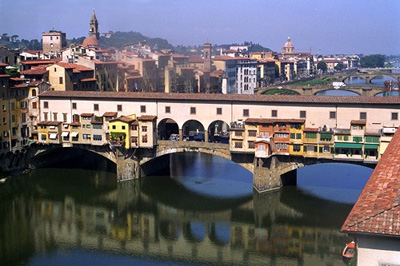 From the time I was in nursery school until I graduated from high school, I never spent a summer in my home state of Michigan. Most summers we went to Maine, but for three summers, we headed not to the rocky, Atlantic coast, but across that ocean to Europe. The middle summer when I was fifteen, we explored England, Italy and France deeply and passionately. My mother, possibly the best trip planner ever to draw breath, spent nearly a year before the trip selecting the perfect bed & breakfasts, auberges and pensiones for us.
From the time I was in nursery school until I graduated from high school, I never spent a summer in my home state of Michigan. Most summers we went to Maine, but for three summers, we headed not to the rocky, Atlantic coast, but across that ocean to Europe. The middle summer when I was fifteen, we explored England, Italy and France deeply and passionately. My mother, possibly the best trip planner ever to draw breath, spent nearly a year before the trip selecting the perfect bed & breakfasts, auberges and pensiones for us.
The things we wanted to see were an odd mixture of The Things One Sees in Europe (The Coliseum, The Louvre) and things my father wanted to see (the famous “Black Madonna” of Urbino). A consummate networker long before the days of the internet, my mother communicated her charm and enthusiasm via weightless, pale blue aerogrammes that appeared in the mailbox all year, one memorably addressed to “La Famiglia Graham;” by the time we boarded the plane for Frankfort in June, deposits were made, and an assortment of feather beds, duvets and hand-embroidered pillow cases awaited our travel weary bodies.
We fell hard for Florence, so hard that my mother cancelled our reservations in Venice and booked an extra week. Our “insider” guide was a colleague of my father’s, an Italian professor named Bob (and a “real” Italian), the leader of a group of Michigan State University students studying in Florence for the summer session. Bob had rented a villa at the top of an impossibly steep hill lined with Cypress trees to which we ascended one afternoon for bread, cheese, olives, and a plate of salami, soppressata, and prosciutto.
Not a Happy Camper
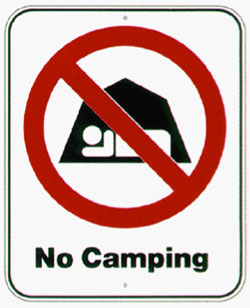 During the seven years in which I lived in Boston, I was completely safe from the specter of camping. My friends and acquaintances went to the Cape or Nantucket in the summer, but no one talked about camping. I was also blissfully unaware of all camping-related issues during my childhood years. We spent many summers in a cabin in Maine which was in the woods, had no television or telephone, and required the hauling of drinking water in jugs, because the taps were supplied by the lake. It was rustic, to be sure, but I slept on a mattress, had a dresser and a lamp, and saw a bright-line distinction between being "indoors" and being "outdoors." If I wanted to use the small, but clean and regularly accoutred bathroom, for example, I could go "indoors," and close the door behind me. If I chose to be among the trees or swim in the lake, I could go "outdoors." There was no confusion between the two locations, particularly relative to bathroom usage.
During the seven years in which I lived in Boston, I was completely safe from the specter of camping. My friends and acquaintances went to the Cape or Nantucket in the summer, but no one talked about camping. I was also blissfully unaware of all camping-related issues during my childhood years. We spent many summers in a cabin in Maine which was in the woods, had no television or telephone, and required the hauling of drinking water in jugs, because the taps were supplied by the lake. It was rustic, to be sure, but I slept on a mattress, had a dresser and a lamp, and saw a bright-line distinction between being "indoors" and being "outdoors." If I wanted to use the small, but clean and regularly accoutred bathroom, for example, I could go "indoors," and close the door behind me. If I chose to be among the trees or swim in the lake, I could go "outdoors." There was no confusion between the two locations, particularly relative to bathroom usage.
When I became a parent, and met all kinds of other interesting parents, it became clear that people around here camp with great relish, and that they feel that others should enjoy the experience. They speak with great love about being surrounded by nature, getting closer to family, and the fun of cooking over an open fire. Early on, I deflected all attempts to bring me into the Cult of Camping with a polite smile, a shake of my head, and a speech along the general lines of "I would not, could not, in a tent/I would not if you paid my rent/I do not like dirt, Sir or Ma'am/a stolid urbanite, I am!"
More Articles ...
Welcome to the new One for the Table ...
Our Home Page will be different each time you arrive.
We're sure you'll find something to pique your interest...

